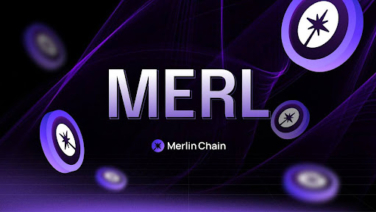A month ago, the Bitcoin community welcomed its first major network upgrade in four years, as the Taproot upgrade went live in November. The upgrade aims to introduce smart contract capabilities and offer greater transaction privacy on the Bitcoin network. Unlike the 2017 SegWit upgrade, the Taproot upgrade witnessed a rare moment of consensus among the network participants, with over 90% of the miners voting in favor of the upgrade.
At its core, the Taproot upgrade will make multisig transactions more private, while improving the network’s efficiency by unlocking the potential for smart contracts, which will reduce the cost of transactions and increase the speed of transactions. Simply, the Taproot upgrade boosts the capabilities, utility, and functionalities of the Bitcoin network.
As mentioned above, the 2017 SegWit upgrade led to a contentious ‘civil war’ among the Bitcoin community causing a hard fork that created Bitcoin Cash, BCH. The latest upgrade took a cleaner and more community-focused route as Taproot gained near-universal support as the community agreed the improvements on the code were fair and efficient.
What does Taproot bring to Bitcoin?
The main advancement brought about by Taproot is digital signatures. Bitcoin uses the Elliptic Curve Digital Signature Algorithm (ECDSA) to create digital signatures and keys that verify transactions on the network. With the Taproot upgrade, Schnorr signatures will be introduced, which reduce the network data load, are more secure and simple to implement.
Via Schnorr signatures, users can batch multiple signatures and transactions together to send them as one transaction. This is quite to the current ECDSA signatures which require every signature to be validated against a single public key, which slows down the verification of Bitcoin transactions. This extended the time required for complex multisig transactions that require multiple inputs and signatures.
Simply, the Taproot upgrade will enable aggregation of multiple signatures into one transaction, easing up the validation and verification process. Now, users will be able to quickly verify multiple transactions in one batch instead of verifying one transaction at a time.
Additionally, the Taproot upgrade also improves the network’s privacy as it is more difficult to identify an individual transaction from a complex one. The aggregation of multi-signature transactions is masked from identification from the single-signature transactions.
The aggregated signature transactions also improve the smart contract capabilities of Bitcoin’s network. Theoretically, users will be able to create decentralized applications, or DApps, hence expanding the utility of the blockchain.
A new world for other blockchains
While the upgrade was focused on Bitcoin, other blockchains are also implementing the upgrade to make their platforms more accessible and efficient. Shortly after the consensus to upgrade to Taproot, QTUM, the 92nd largest blockchain, was among the leading blockchains apart from Bitcoin to support the Taproot upgrade.
In May, Qtum founder, Patrick Dai showed his support for the Taproot upgrade activation stating the upgrade “will bring incredible utility and robustness to Bitcoin” due to the Schnorr signatures. Months later, QTUM announced they will be supporting the Taproot upgrade on their blockchain to improve efficiency in transactions.
Qtum will support Bitcoin Taproot. “Taproot activation would bring incredible utility and robustness to Bitcoin in the form of Schnorr signatures that are more efficient than ECDSA signatures”
— Patrick Dai (@PatrickXDai) May 6, 2021
Founded in 2016, QTUM was one of the first blockchain projects to combine Ethereum and Bitcoin features onto a platform. The blockchain combines Ethereum’s smart contract functionality with the security of Bitcoin’s unspent transaction output model (UTXO) creating a scalable and cheap platform for large corporations or organizations to use. With the Taproo’t upgrade, QTUM users will be able to send multi-sig transactions faster and pay a lower transaction fee every time they transact on the network.
However, QTUM is not the only blockchain to implement the Taproot upgrade on its blockchain. Nimble Syscoin, a Bitcoin-modeled blockchain offering fast, cheap and scalable transactions, announced they would be upgrading to Taproot to boost their transactional efficiency.
The expected Bitcoin upgrades in the future
The Taproot upgrade is expected to scale the blockchain transactional system – making it more secure, private and lowering the fees. However, this is not the last upgrade expected on Bitcoin in the near future. Developers, miners, and other stakeholders are already working on new updates to further improve the network.
At the top is the cross-input signature aggregation, or CISA, which proposes to allow single transactions to be aggregated to enhance privacy and reduce the cost of mixing coins. According to the proposal, privacy-enabled wallets or mixers such as Wasabi and Samourai will be able to mash up all transactions at a given time into one large transaction, to make it difficult to distinguish the origin of the transaction while reducing the cost of the transaction.
Additionally, developers have also proposed to introduce “covenants”, which would restrict where a certain wallet can send funds. This would help corporations manage their wallets better, for example, allowing the transactions to be sent to only a few whitelisted addresses.
Final words
The Taproot upgrade is set to breathe a new life to Bitcoin’s network. With faster and cheaper multi-sig transactions, corporations have a better leeway to use Bitcoin and transact through the chain. It also opens the door for other chains such as QTUM and Syscoin to improve their platforms and offer more efficient services.






